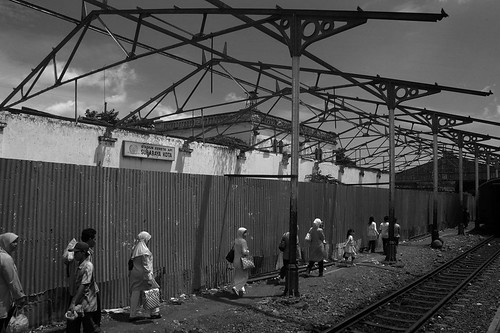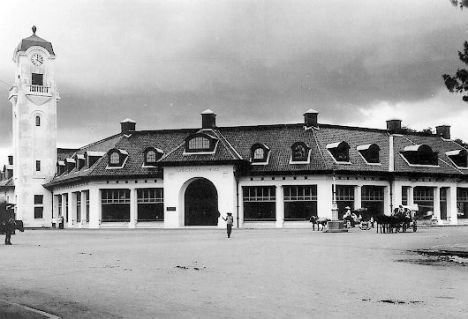Piaggio was founded in Genoa in 1884 by Rinaldo Piaggio. Initially fitting out luxury ships the company was soon also producing road and rail vehicles and aircraft. However it's most famous creation was much smaller, the iconic Vespa scooter.
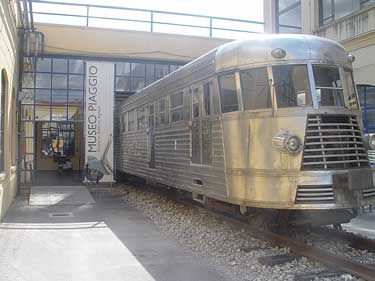 | 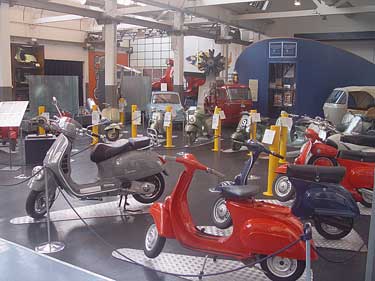 |
The museum entrance features a 1937 Piaggio stainless steel railcar. | Vespas everywhere. |
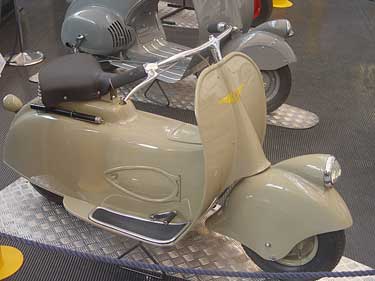 | 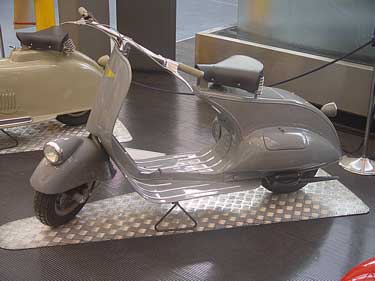 |
| The prototype was nicknamed “Paperino” (Donald Duck) because of its strange shape, but Enrico Piaggio did not like it and only about one hundred were constructed. | Redesigned by Corradino D’Ascanio this was the first Vespa, so named because when Enrico Piaggio saw the narrow waisted prototype he said “It looks like a wasp!” and the name stuck. |
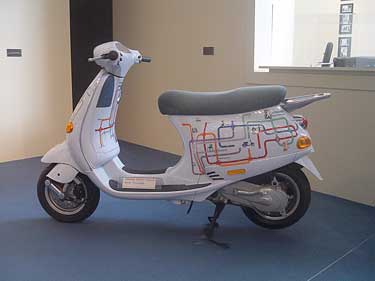 | 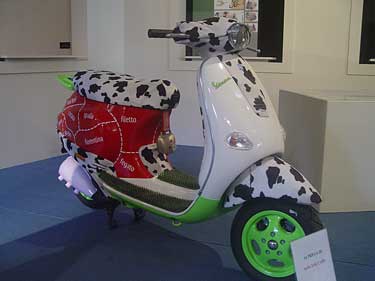 |
This is an entry for the 2001 “Vesparte” contest. | Another entry for the “Vesparte” contest, “Mucca Pazza” (“Crazy Cow”) |
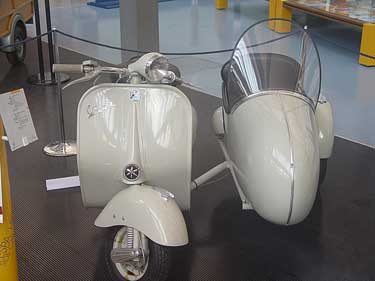 | 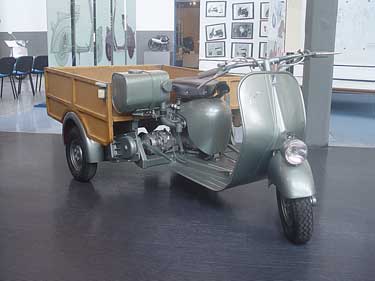 |
| Vespa also manufactured sidecars simply attached to the scooter by one single connecting arm. | The Piaggio Ape (Italian for bee) is a light commercial vehicle built first in 1948. It consists of a Vespa scooter fitted with a rear axle. In 1964 a drivers cab was added. |
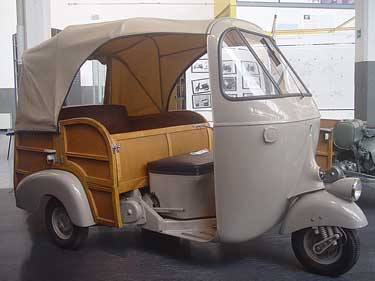 | 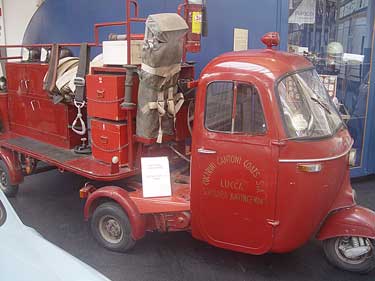 |
1956 Ape AC Calessino. Recently the company has produced a limited edition replica of this machine. | 1960 Pentarò (5 wheeler) fire engine. It was in use until 2002. |
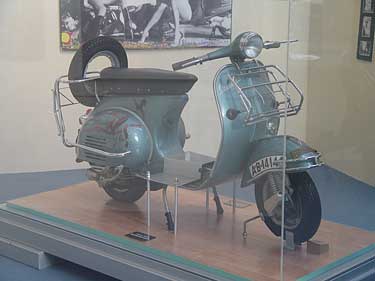 | 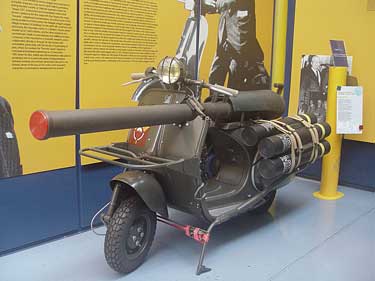 |
Probably the world’s most valuable Vespa. Decorated by Salvador Dalì complete with his signature and the name of his partner Gala. It's in a glass case and bolted down ! | The Vespa 150 T.A.P. used by the French army was designed to be parachuted into action. It was fitted with a 75mm recoilless cannon. |
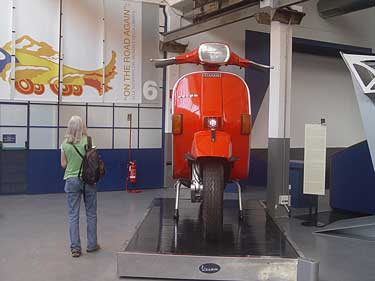 | 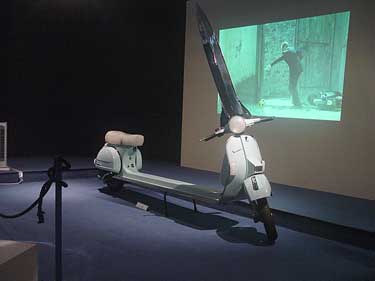 |
One very large Vespa. | Created by the sculptor Mino Trafeli this is the “Mythological Vespa” |
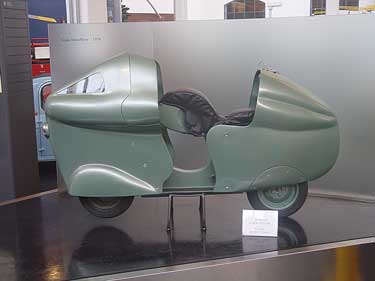 | 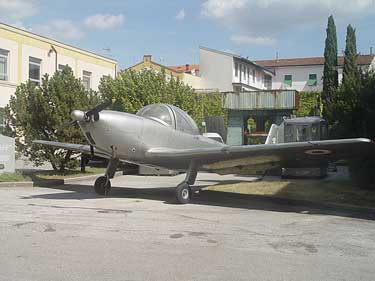 |
Piaggio also turned their hand to record attempts and in 1950 on the Montlhery circuit this Vespa ran continuously for 10 hours and set 17 world records. | 1951 P148/149 training aircraft |
Opening hours: Wednesday to Saturday 10 a.m. to 6 p.m (but check before you go)
















